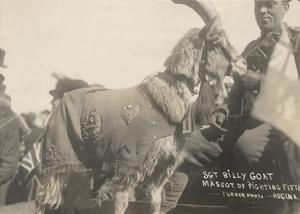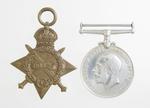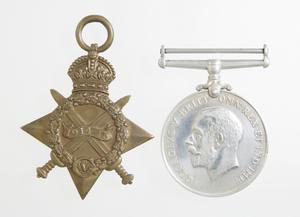Unit
5th Canadian Infantry Battalion (Western Cavalry)
Branch
Infantry
Service Component
Canadian Expeditionary Force
Service Number
440953
birth
1892/12/24
Pierre, South Dakota, United States of America
death
1964/03/18
Pierre, South Dakota, United States
grave
Riverside Cemetery (Plot 145), Pierre
Gender
Male
Arthur Edward Anderson was born on 24 December 1891 to Hans and Julia Anderson in Pierre, South Dakota, United States. His parents emigrated to the United States from Sweden. By 1900, Arthur is listed as living with his mother and older brother Ole, and by 1910 is working as a labourer. Arthur crossed into Canada and traveled to the Canadian Army “Camp Sewell” training area near Carberry, Manitoba, to attest for the Canadian Expeditionary Force on 21 April 1915, though a magistrate was not available to accept his oath until 3 June 1915.
Anderson was taken into the 53rd Canadian Infantry Battalion, shipping out to the United Kingdom in September of that year. He arrived in Havre, France to join his combat unit, the 5th Canadian Infantry Battalion (Western Cavalry), on 24 November 1915. On around 8 February 1916, as he was heading out to a listening post forward of the main trenches near the Messines Ridge, he was hit in the back by a shrapnel ball on the right side of his spine. After a successful operation by No.2 Canadian Field Hospital, Anderson was sent back to the United Kingdom to recover. By 6 June 1916 he was returned to the 5th Battalion in France and, on 24 October, he was promoted to Lance Corporal (LCpl). On 9 April 1917 the 5th Battalion was assigned the southern flank of the attack on Vimy Ridge with the furthest to go to reach its objective. LCpl Anderson was hit by artillery shrapnel, receiving a severe wound to his right lung and some injury to his right hand as well. Once again, he was sent back to the United Kingdom for treatment, but recovery took some time and he was classified in medical category D1 (unfit for field duty but possibly able to recover). After rehabilitation, with the 32nd Reserve Battalion, Anderson was promoted to the acting rank of Corporal on 8 May 1918. However, evidently wishing to get back into the fight, he later took a voluntary reversion in rank to LCpl and went back to France to rejoin his old unit. The war was over by then and he was returned to the United Kingdom on 15 March 1919 and repatriated to Canada arriving on 18 April 1919 on SS Carmania. He was discharged on 24 April of that year in Regina, listing his residence as Star City, Saskatchewan.
He did not stay in Canada. By 1920 he was doing road work as a labourer in Buckeye, South Dakota, and farm work by 1930. Eventually he seems to have purchased his own farm and subsequent American census shows him employing at least one farm hand. Some time after 1940 he married Melita Odemark McPherson and, after her death, he went to live with her family in Pierre, South Dakota. He died on 18 March 1964 and is buried in Riverside Cemetery (Plot 145) in Pierre.




